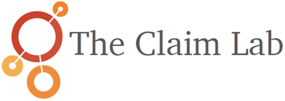Cognitive Kitchen – Part 2
The Mental Health Cognitive Kitchen – Recipes for a better understanding of Mental Health conditions.
Part II: Recipe for Return to Work
Good, effective therapy is needed when someone is off work with a mental health problem, and some very basic and common sense ingredients are needed to help with RTW. However, providers are not trained to focus on helping the patient return to work. They focus on personal areas of the patient that generally will not facilitate a quick recovery and return to work.
For example, an individual who was struggling with depression that affected their productivity starts therapy. Rather than focus on strategies that will reduce depression and restore function, the therapy sessions focus on childhood trauma that was disclosed in the intake (and the provider opines is the root “cause” of the depression). While that may be something that could be helpful, to “unbundle” years of history to work through the trauma is best done when the individual is anchored; working rather than sitting at home worrying and ruminating about the past.
The first ingredient of this common sense recipe is the outcome or goal. Simply stated, the goal is to restore function for recovery and return to work. It is critical to establish the goal within the first or second visit. In 2007, the American Psychiatric Association stated that being off work is a crisis; all resources possible should be brought in to aid in recovery and work is therapeutic.
Return to work as the focus of therapy is not harmful. Therapists should clearly state that return to work is the outcome. Research completed in the Netherlands in 2012 showed if return to work was the goal and focus of therapy, people’s mental health condition improved and they were able to return to work sooner than other patients who did not focus on return to work in therapy. Follow this link to see the American Psychological Association article.
The second ingredient is to set the timeframe. People make better use of treatment when it is time limited. (When did you complete that term paper??? Probably the night before it was due.) Setting a timeline provides pacing and structure for the therapy process.
The third ingredient is setting a schedule of activity. Usually when people start therapy, they have been sitting at home, inactive, worried, with low motivation. They are “drifting.” Routine activity grounds them. They need to feel they are accomplishing things to feel good about themselves. Therapy that focuses on getting the patients’ previous daily schedule re-established and filling that schedule with activity provides better results than just talking with the patient.
The final ingredient is the “type” of therapy. Cognitive Behavior Therapy (CBT) has been shown in the research to be most effective in treating most mental health conditions. Eight to ten sessions is most common; some therapy can last up to 20 sessions before the individual starts the process of returning to work. CBT provides a framework for addressing irrational thoughts that affect one’s mood and giving homework designed to increase activity. When someone thinks differently about their situation and then engages in behaviors that help reduce feelings of anxiety and depression, for example, they recover their self-confidence more quickly, improve their mood and subsequent actions continue to propel them forward in a positive way.
Mental health is becoming a more frequent concern for providers, and in Part 1 we looked at using the power of analytics to help select the right claims for this process, and in Part 2 we have looked at the right type of therapy to apply.
If you would like to learn more detail about this interesting topic, please email us at info@claimlab.org or Kate Harri at kate@workingsol.net.

